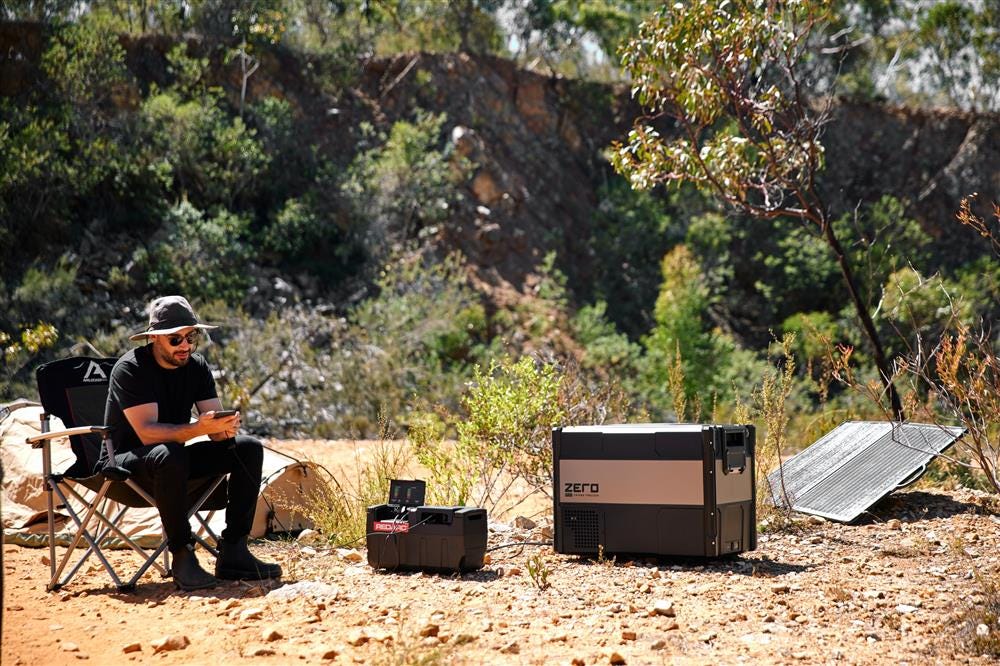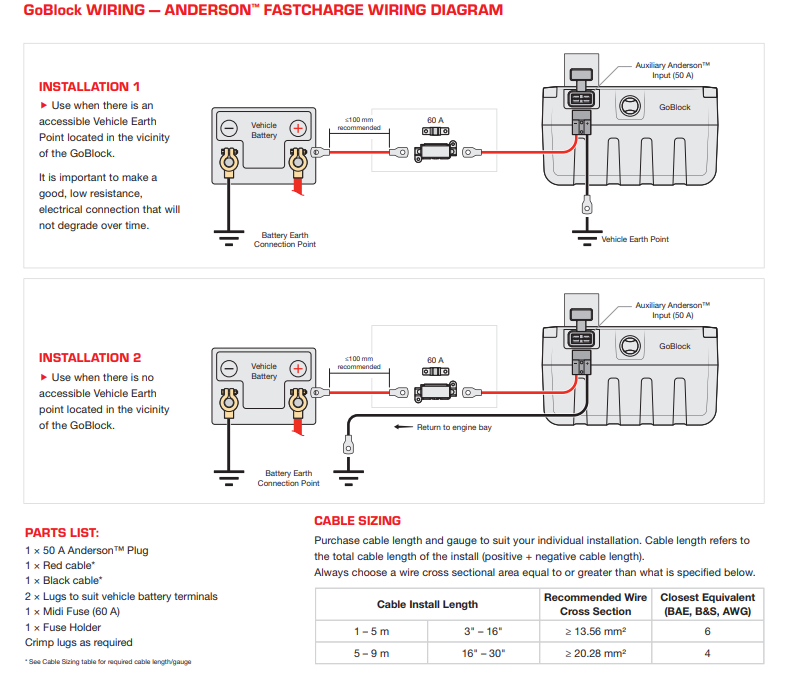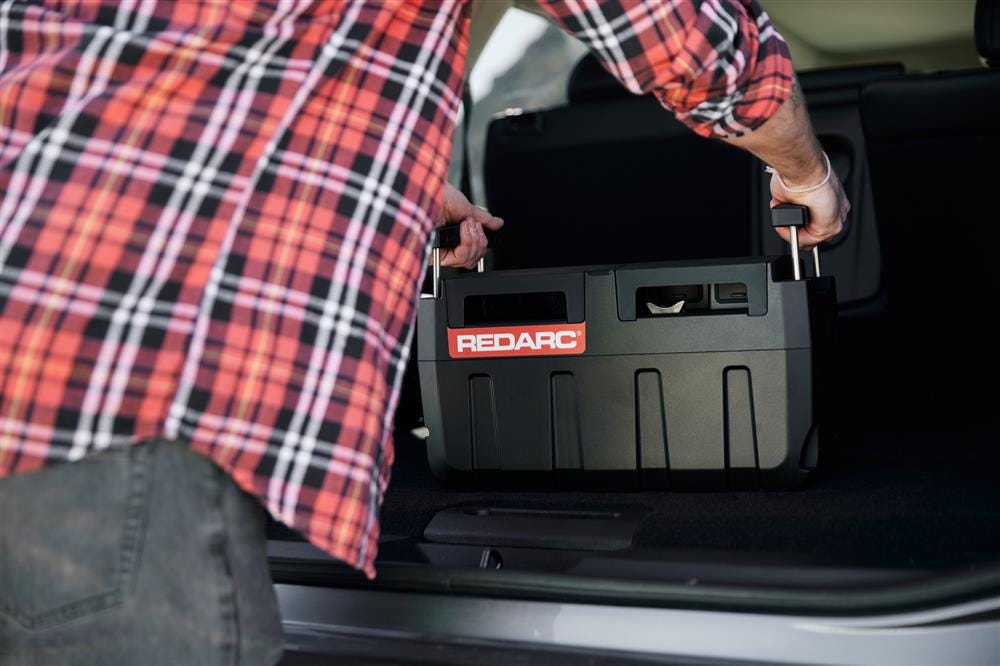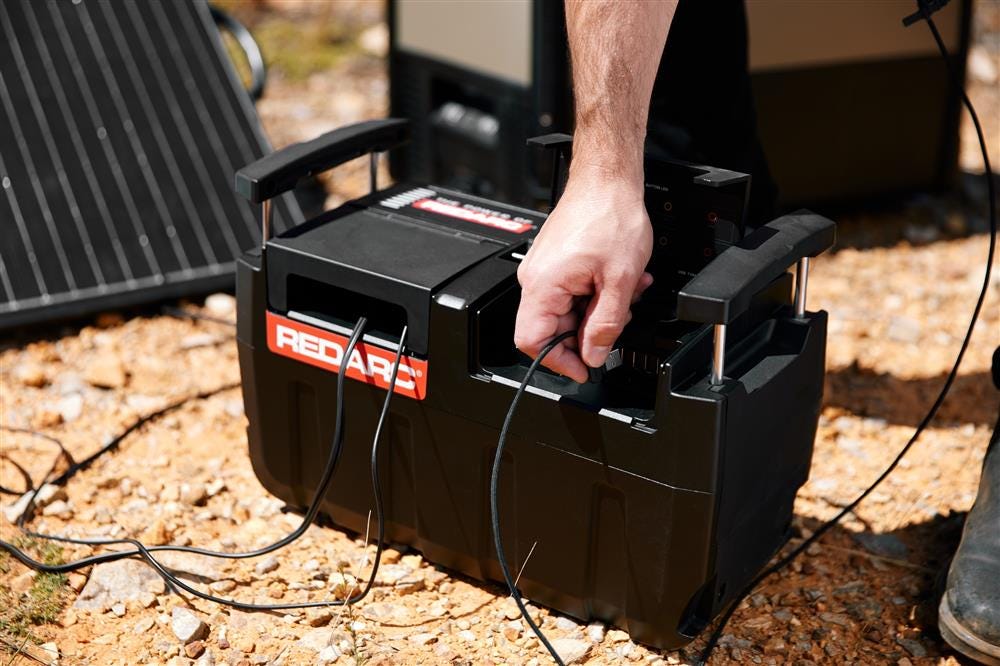Are you looking for a portable power solution to keep you going on weekends away? With so many options on the market, choosing a system that is flexible, adaptable and perfect for your 4x4 or SUV can be difficult.
REDARC’s GoBlock portable dual battery system is versatile enough to be charged by 240V mains power at home or in the caravan, by the cigarette socket while you’re driving or by solar when you’re setup at camp or on the beach. GoBlock also has the capability to fast charge at a whopping 50A if expertly wired to your vehicle alternator.


While a 50A fast charge connection isn’t necessary to charge your GoBlock while driving, for the installer or traveller with a bit of knowhow, this blog tells you exactly how to capture the 50A of fast battery box charge from your vehicle’s alternator. This unique, adaptive charging technology harnesses the power from your vehicle’s alternator to maximise the charging potential at idle, without impacting the vehicle’s start battery.
This fast charge feature was designed as most vehicle alternators have limited power output when the vehicle is idling, and modern battery chargers have the potential to draw more power than the alternator can produce. This can lead to lower voltage on the start battery, which impacts the vehicle’s operation or your battery charger cycling on and off, resulting in a lower amp hour battery recovery.
Depending on your alternator and vehicle layout, there are two different methods for installing a fast charge connection for your GoBlock.
Finding your alternator type
Depending on what alternator your vehicle has, will impact how you should install a charging hotwire. With the constant evolution of technology, variable voltage or smart alternators are becoming standard issue in most modern vehicles. This has been the case since about the mid 2000’s though each model and vehicle will differ. Smart alternators require some sort of battery sensing technology to determine the load coming from the battery, this is done by a battery sensor found on one of the battery terminals (usually the battery negative).


Smart alternators will have an effect on how you install your GoBlock fast charge connection as there are situations where the output voltage is too low, too high or not charging at all (hence the name variable voltage). Before you look to install your hotwire, it’s important to know which alternator type you have, and decide on an installation solution from there. For more information on finding out if you have a smart or standard alternator check out our Tech Tips here.
How to fastcharge your GoBlock


For a standard alternator
This method of hotwire installation can be used when your vehicle has a standard alternator or there is an accessible connection to a factory earth point either on the chassis of the vehicle or the body.
First, select the appropriately sized cable gauge for the length of vehicle you are installing into. At a minimum, 6 B&S is appropriate up to 5m but for longer distances, 4 B&S is required. You will only need to install one cable from the positive terminal on vehicle battery, through a 60A fuse and to a 50A Anderson connector for the GoBlock. The appropriate size cable lugs and connectors will be needed to join onto the vehicle battery and to the fuse holder. Special crimping tools may be required to join the cable to the lugs. This is the completion of the positive connection for GoBlock.
Moving onto the negative/earth cable, it is ideal to locate an earth bolt on the chassis of the vehicle or a body earth behind the panels or carpet in the cabin. Find a location that perhaps has other earth/ground cables already bolted to it or, if having to use an existing one with no cables already to it, ensure you scratch away the paint (if there is any) to make a low resistance, metal-on-metal contact with the cable lug. From there, use the same gauge cable that was used by the positive and crimp a cable lug to the end. Run the other end of the cable back to the Anderson connector negative pin for the GoBlock.


Every SUV is different to the next and attention needs to be paid to ensure the correct method is chosen for the ground/earth connection. Cabin to chassis construction can involve the use of rubber mounts to cushion bumps and corrugations to the passengers and make earthing to a body panel in the cabin unreliable and high resistance in some cases. In this case you will want to install the hotwire as if you had a smart alternator, even if you do not to ensure a sound earth connection.
Once the cables have been run, secure them with cable/zip ties and conduit if required so as not to come loose when the vehicle is driving. When connecting the cables to their different points, ensure to always connect the positive cable first and then the negative second. Once this is done, plug the Anderson connector into GoBlock’s ‘Input’ receptacle and you are ready to go!
For a variable voltage or smart alternator
This method is used when no earth/ground point can be found or used on the chassis or body earth of the vehicle. In this case, a negative cable will need to be run back to the vehicle battery negative terminal or an engine bay earth point. If you’re installing the hotwire on a newer vehicle with a smart alternator, the earth connection must be connected to the factory earth point and not directly to the battery terminal.
The positive cable install is the same as if you were installing in a vehicle with a standard alternator. Select the appropriately sized cable gauge for the length of vehicle you are installing into and install one cable from the positive terminal on the vehicle battery, through a 60A fuse and to a 50A Anderson connector on the GoBlock.


Run an additional cable back to the engine bay of the vehicle in tandem with the positive cable and find a ground point or use the vehicle battery negative terminal to connect it to. Again, ensure that the cable lug is appropriately sized for the connection point chosen and is crimped securely with low resistance. Again, once the cable shave been run, secure them with cable/zip ties and conduit if required and always ensure that the positive cable is connected first and the negative second.
Reiterate the flexibility of charging methods available for the GoBlock, as well as reference to the RedNetwork program for people wanting these installed for them.
For more information on installing a GoBlock charging hotwire, check out the wiring diagram here.
